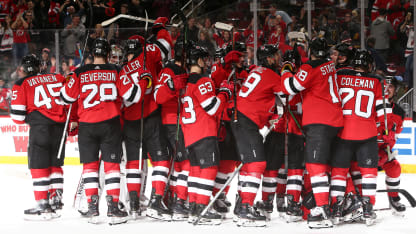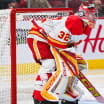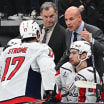Although difficult, there are some keys to being able to pull off this kind of comeback.
The first thing you need to do is stop the bleeding, which begins with making a fair assessment.
Sometimes that's tough to do. When you're behind the bench and when you're playing in the game, your emotions can get carried away with each goal against and the score.
And when you're playing, it's even worse.
You're usually worried about your own game and you're not always sure how the team is playing. You know you're not playing well or there's things you're doing that aren't successful. Sometimes younger players don't know what to do next to change that trend.
Your assistant coaches, the goalie coach or the eye-in-the-sky coach can sometimes put things in perspective between periods. Sometimes a coach will watch the video the next day and realize, "It looked way worse live. They had 15 shots in the first period, but limited Grade A scoring chances, and it wasn't as bad as we thought."
So a fair assessment is important: What's going wrong? Are we undisciplined? Are we catching bad breaks? Are we lacking execution?
And as a coach, you have to ask yourself, "Was the game plan the right one?"
Then you jump into the action with adjustments.
To come back from down multiple goals, the coach is going to have a couple of options and the team is going to have some options.
Do you need a timeout? Do you need to make a change in goal to change the momentum? Or you're down three goals, but there's a couple minutes left in the period and you'll have time to regroup and address what needs to be addressed in between periods.
But I think the first thing most coaches will say is, "Let's bring up our compete level and win our battles." If you don't have the puck, if you don't win battles on face-offs, if you don't win 50-50 pucks, if you're not first on loose pucks, it's going to be real tough to win the game.


















